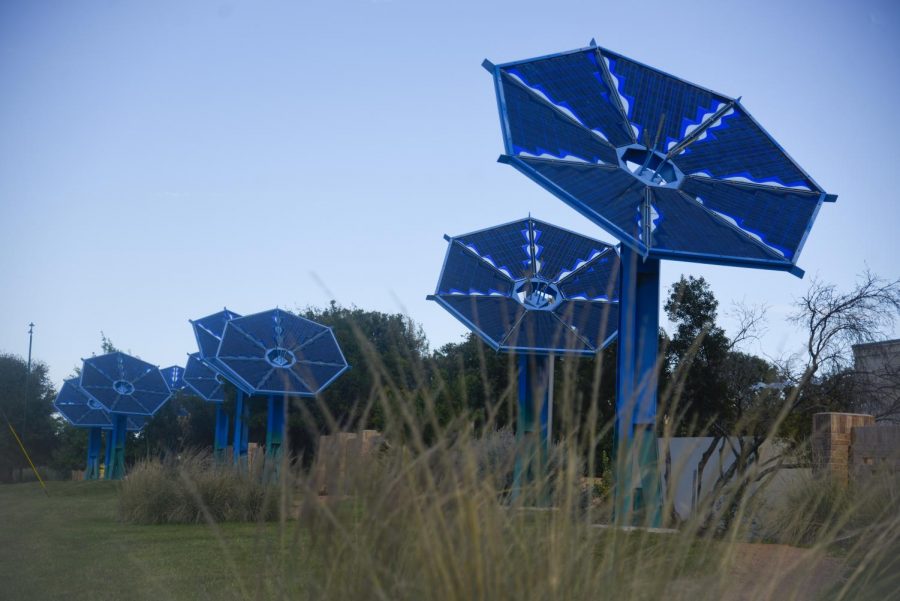UT research could lead to more solar energy in Austin
November 3, 2021
Research from an environmental sustainability organization and a group at UT could lead to an expansion of solar energy in the Austin area.
The environmental advocacy group, The Ray, first collaborated with the Webber Energy Group at UT last year to analyze the potential for solar array installments in land off of Central Texas highways, known as right-of-way land.
The researchers found that solar arrays on that land could produce an energy equivalent to the amount used in four million homes per month, said Joshua Rhodes, research associate at Webber Energy Group. On Oct. 20, The Ray announced another collaboration with the mapping company Esri and the Texas Department of Transportation to create a solar mapping tool capable of analyzing the economic potential and the risks of solar array locations on ROW land.
The company hopes the project will push decarbonization efforts, said Allie Kelly, executive director of The Ray.
“If you look at demographics of communities along the national highway system, most of those communities are low-income … so you’re talking about developing land for solar that could then be offered to those low-income communities,” Kelly said. “There’s an opportunity to really address environmental justice and equity issues by bringing clean energy to those communities using the empty roadsides.”
The group agreed on a formal partnership with the City of Austin in the spring of this year to test their solar analysis tool and to look into installing solar arrays on ROW land such as off of State Highway 130, said Meredith Stinson, communications director at the Ray. The Ray already conducted an analysis for solar suitability and economic value at that location, Kelly said.
It could take one to two years for the solar arrays to be built depending on planning with TxDOT, Kelly said.
The mapping tool features a variety of capabilities such as developing 3D modeling of a solar array and the creation of an avatar to receive a first-person visual of how it would look, Kelly said.
“As a transportation operator, that land is an asset,” Kelly said. “If I want to know what it feels like, (or) what does it mean to have solar panels on my asset, I can actually go down into the solar site, and I can see what the solar array means for my asset.”
The Ray collaborated with Michael Webber, the Webber Energy Group founder, and Rhodes to look at different interchanges along the national highway system and estimate solar potential, Kelly said.
“The Ray was interested in understanding what the national potential was for developing solar energy infrastructure on the roadsides of the national highway system,” Kelly said. “The Webber Energy Group is one of the foremost experts in the U.S. on energy transmission and energy generation systems.”
The Ray wants to negotiate further opportunities for the solar arrays, like habitats for pollinators around the sites, Kelly said.
“Transportation now accounts for 29% of all greenhouse gas emissions in the U.S. every year,” Kelly said. “We can’t delay in addressing decarbonization or addressing carbon emissions and working to reduce and eliminate them.”












